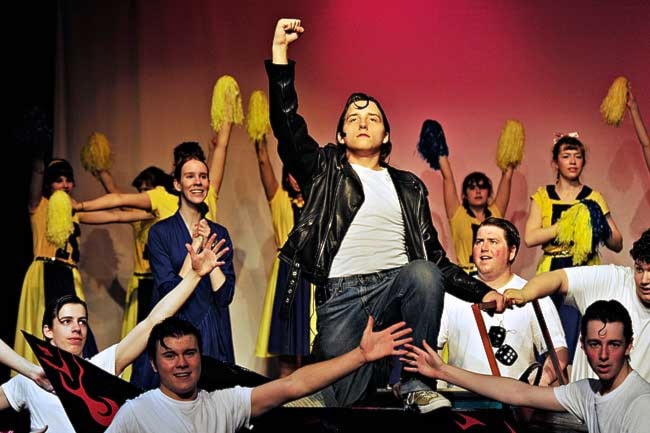‘You would never see this in Argentina,” said Ramiro Vazquez as he finds the French dark roast coffee dispenser and fills his paper cup.
Though used to stronger, Italian-style coffee, the artist still feels at home in a cafe and Baked is no exception.
Today, some of Vazquez’s work will find a home at the same Main Street cafe in the form of a new exhibit.
Sitting on a couch by the window, Vazquez pointed out a few other differences between his South American homeland and the Canadian North.
One of them is light.
Here in Whitehorse we have what Vazquez describes as a blue light, which makes colours pop and vibrate more intensely.
In Vazquez’s home province of Cordoba, they only get a few hours of this blue light in the early mornings.
The rest of the day is usually a harsh yellow light, with a little orange as the sun goes down in the evenings.
This makes for drab colours, which infuse the local art, said Vazquez.
In the hot, dry northern province of Jujuy, all of the art is made with very dull, earthy colours.
These differences between the two countries have been very inspiring for Vazquez, who has spent the last four months in Whitehorse.
He came to visit a friend, whom he met while working at a hostel in Buenos Aires, and has been painting all the while.
“Contrasts is, for me, the life,” he explained.
“If you paint something strong, it is strong and no more.”
But if you contrast that strong image, or colour, with something weak it makes both look more intense.
Vazquez’s latest work, which will be on exhibit at the cafe, uses bright colours painted in abstract patterns.
In front of these abstractions he’ll paint something a little more concrete, like the outline of the clay cliffs or Yukon River.
A third image - the silhouette of himself with his dog or simplistic houses - will be further superimposed onto the painting.
Vazquez says the pieces are usually really three paintings rolled into one and describes the work as realistic abstractions.
Getting Vazquez talking about colour and light is like asking an energetic old man about his youth - it’s hard to make him stop.
He’ll tell you red is an aggressive and assertive colour, and wearing a bright red shirt might help you land a job at your next interview.
In Christian societies, red can be a sign of temptation, but in Chinese culture it represents happiness or good luck.
And colours can affect people in a variety of ways (mostly due to wavelengths).
It’s an idea that’s a little to difficult to explain in either Vazquez’s broken English or this reporter’s awkward Spanish.
It’s better just to give examples.
During an exhibit back home, Vazquez was displaying a number of very large, colourful paintings.
One particular girl was a big fan of one of these paintings and began to sing and dance in front of it.
Later, Vazquez was surprised to learn the girl had a severe mental handicap and normally refused to speak, let alone sing.
During another exhibit in which Vazquez was experimenting with three-dimensional images, a friend who normally has trouble seeing out of his right eye came to give it a try.
Staring through the goggles, he could miraculously see out of that eye again.
Vazquez attributes this strange phenomenon to his extensive use of the colour blue - again, something to do with those wavelengths and vibrations.
Another major difference between Argentina and Canada is its treatment of artists, especially when it comes to displaying their work.
In Argentina, galleries display work from across the globe, which ensures high-quality exhibitions, but makes it more difficult for fledgling local artists to get exposure.
In Canada, on the other hand, government supports local artists and gives them preferential treatment when it comes to shows.
This is something that Vazquez admires, but as a non-Canadian it does make it a little difficult to share his work.
This is why he feels particularly privileged (and lucky) to be allowed to exhibit at Baked Cafe.
This may be the last chance that Yukon residents have to see Vazquez’s work.
His flight home is booked for the end of November.
However, that travel visa of his lasts until the end of December, and he’s been considering changing his ticket and sticking around.
New friends try to convince him to stay a bit longer as they approach him at the cafe and try to practise their Spanish.
About an hour later, Vazquez finishes his watered-down Canadian coffee and gets ready to leave.
He dons a thick, Russian-styled fur cap, coat and mitts and steps out into the November snow - just one more slight difference between Canada and his home.
Contact Chris Oke at
chriso@yukon-news.com
